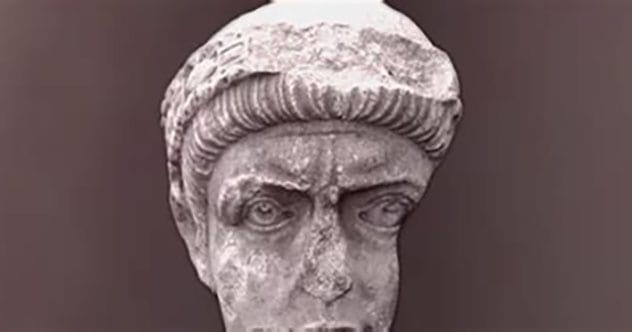We often think of current leaders and how they might misstep, but these days, the worst they face is getting voted out. For Roman Emperors, however, losing power often meant a gruesome end. In the ruthless world of ancient Rome, failure could lead to a swift and brutal demise.
Here are ten Roman emperors who suffered horrific downfalls, showcasing the high stakes of power in the Roman Empire.
Vitellius

69 AD was a wild year in Rome, known as ‘the year of the four emperors.’ Vitellius stood out among those who briefly held the throne, mainly for his excessive indulgence.
Vitellius was known for his over-the-top banquets. His most famous dish was the “Shield of Minerva, Defender of the City,” a massive platter made with exotic ingredients from across the empire. However, he lacked military skill, and his reign was short-lived.
When Vespasian, declared emperor in the East, arrived in Rome, Vitellius was forced to abdicate. Despite his attempts to step down peacefully, he was captured, paraded through the streets, and brutally executed. His last words were a poignant reminder of his former glory: “Yet I was once your emperor.”
Caligula
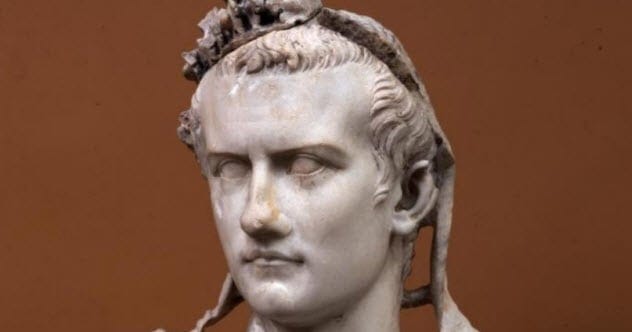
Becoming emperor at a young age can be a dangerous path. Imagine having absolute power as a young adult. Caligula, who often said, “Remember, I can do anything I please to anybody,” quickly became notorious for his erratic behavior. Raised in the treacherous Julio-Claudian court, he likely suffered from paranoia due to the many suspicious deaths around him.
Caligula’s infamous acts included declaring war on the god Neptune, proclaiming himself a deity, and making ominous jokes about his wife’s life. These actions bred resentment among his guards and senators, who eventually conspired against him.
The conspirators ambushed Caligula, stabbing him repeatedly as he walked between the theatre and the palace. His last words, according to Tacitus, were “I’m still alive,” but his reign was definitively over.
Petronius Maximus
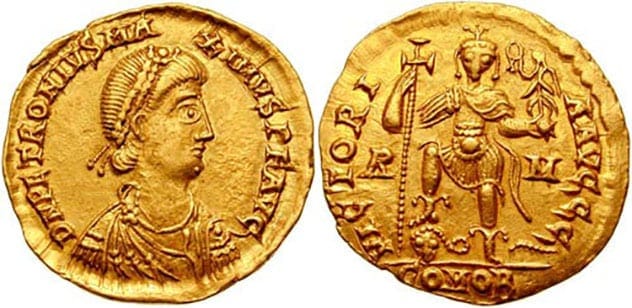
By the 5th century, the Roman Empire was crumbling. Goths and other groups were establishing their own kingdoms within its borders. Emperors, however, still found time for personal indulgences, like Valentinian’s affair with Petronius Maximus’s wife, creating a powerful enemy.
Maximus orchestrated Valentinian’s assassination and seized the throne, marrying Valentinian’s widow, Eudoxia, to legitimize his rule. However, Eudoxia sought help from the Vandal king Geiseric, who invaded Rome, ending Maximus’s reign.
As Maximus fled the city, a mob recognized and stoned him to death. Three days later, the Vandals sacked Rome, giving us the modern definition of ‘vandalism.’
Elagabalus
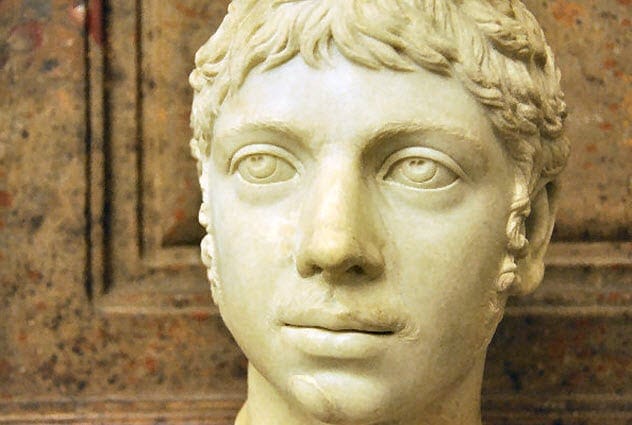
Religion is a sensitive topic, yet Elagabalus dared to introduce a foreign cult to Rome. Becoming emperor around age 14, he was named after the Eastern sun god Elagabal, whose chief priest he was. This religious devotion contributed to his downfall.
Elagabalus’s reign was marked by unpopular sexual and religious practices. He favored male lovers, appointed them to high positions, and married a Vestal Virgin in a sacrilegious act. He even offered vast sums for a surgeon to give him female genitalia.
His behavior was too extreme for the Romans. The army turned against him, and he was assassinated at age eighteen. His mother, who tried to protect him, was killed alongside him. Their bodies were dragged through the city and thrown into the Tiber River.
Commodus

Marcus Aurelius, a wise and respected ruler, was succeeded by his son, Commodus, marking the end of a peaceful era. Unlike previous emperors who were chosen for their abilities, Commodus inherited the throne, proving to be an unstable and brutal leader.
Commodus abandoned his father’s wars against the German tribes to indulge in pleasures in Rome. He openly flaunted his relationships and squandered the empire’s resources, frequenting taverns and brothels.
Conspiracies against Commodus were frequent, including one led by his own sister. He was eventually killed in a plot involving his wife, who hired an athlete to strangle him in his bath after poison failed.
Nero
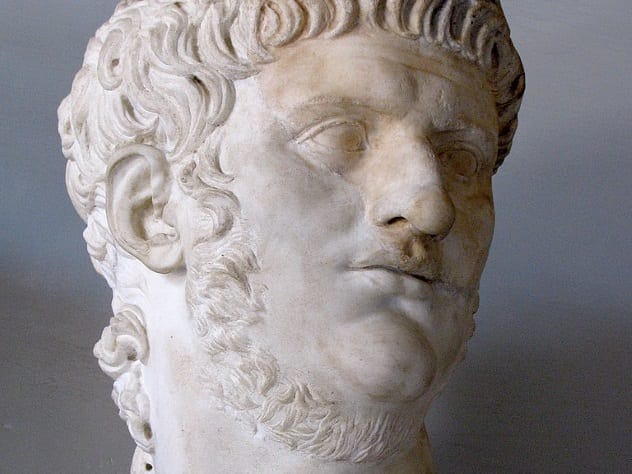
The Julio-Claudian dynasty was known for keeping power within the family through murder, sex, and intrigue. Nero became emperor after his mother, Agrippina, married Emperor Claudius, who adopted Nero. When Claudius died, Nero became emperor, and Claudius’s son, Britannicus, was soon killed under suspicious circumstances.
Despite his mother’s attempts to control him, Nero wanted sole power. After several failed assassination attempts, Agrippina was stabbed to death by Nero’s agents. Her last words were directed at her womb, cursing it for birthing such an unnatural son.
Nero focused on his pleasures and artistic pursuits. He forced people to watch his performances, with some faking death to escape. When generals rebelled, Nero hesitated until it was too late. He arranged his burial plot and, admiring it, remarked, “What an artist dies in me.” With assistance, he stabbed himself in the throat.
Joannes
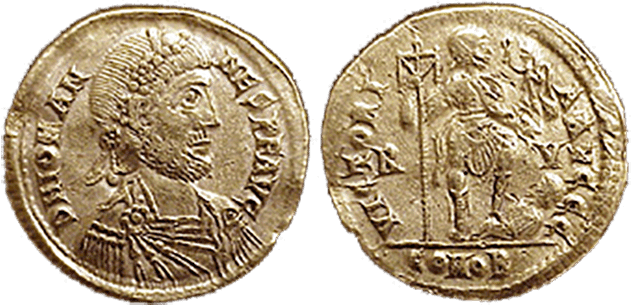
Despite the dangers of being a Roman emperor, many still sought the throne. When Emperor Honorius died, a power vacuum was filled by Joannes, a high-ranking civil servant.
The Eastern emperor sent forces to depose Joannes, but they were defeated. Joannes showed mercy, hoping for a peace settlement. This mercy was misplaced, as the envoy instigated a conspiracy against him.
Joannes was captured and subjected to humiliation. He was paraded through the hippodrome with a severed hand, made to ride an ass, and then executed after suffering abuse.
Valentinian

In the 4th century, the Roman Empire faced constant threats, requiring emperors to spend much time on military campaigns. This constant warfare proved fatal for Valentinian I.
When the Quadi tribe was angered by Roman forts on their land, they sent envoys. The Romans invited them to dinner and then murdered them. This betrayal led the Quadi to invade Roman territories, forcing Valentinian to respond.
After crushing the invasion, Valentinian met with Quadi representatives. When they refused to take full responsibility (given the treacherous murder of their envoys), Valentinian flew into a rage, causing a blood vessel in his head to burst. He collapsed and died on the spot.
Carus
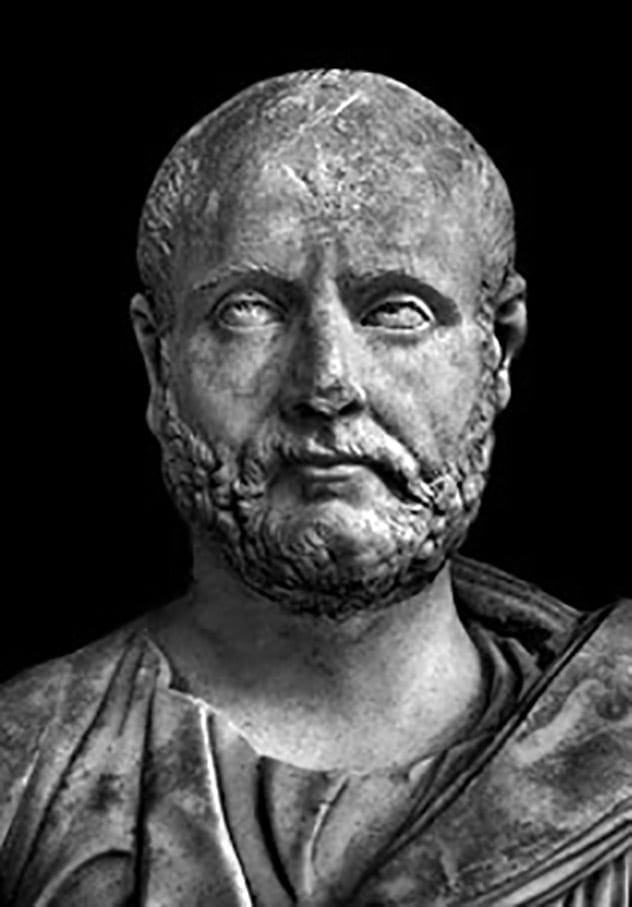
Carus also dealt with the Quadi, but more successfully. Proclaimed emperor by his troops, he led victorious campaigns against German tribes before focusing on the Persian Empire.
He recaptured Mesopotamia and advanced into Persia, defying oracles. Already ill, Carus retreated to his tent when a thunderstorm struck. He was found dead the next morning, apparently killed by lightning.
His death was seen as a divine sign to abandon the campaign, and the Romans retreated.
Valerian
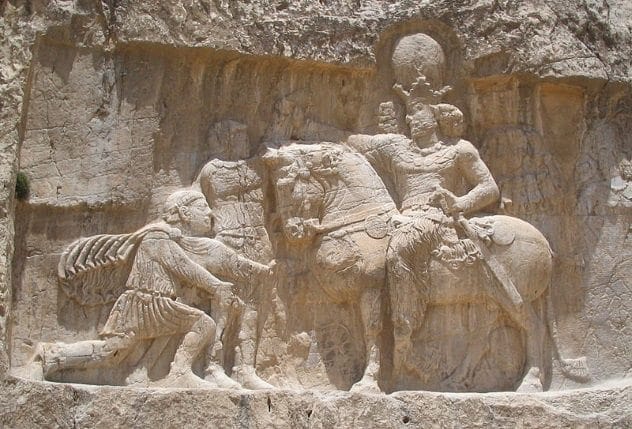
Valerian attempted to subdue the Persians. As the growing Persian Empire threatened the Eastern Roman Empire, many emperors waged war against them. Valerian was particularly unfortunate.
He reclaimed lost lands, but a plague weakened his army. Despite this, Valerian faced the Persian emperor Shapur at the Battle of Edessa, where the Roman army was destroyed.
Valerian was captured alive, the first Roman emperor to suffer this humiliation. Persian inscriptions depict Valerian being brought before Shapur. Captive soldiers were forced to dig water channels, while Valerian was reportedly flayed, his skin dyed and displayed in a temple. Other accounts claim he was used as a footstool by the Persian kings.
These stories of Roman emperors serve as stark reminders of the brutal realities of power in the ancient world.
Which of these stories shocked you the most? Leave your comment below!


